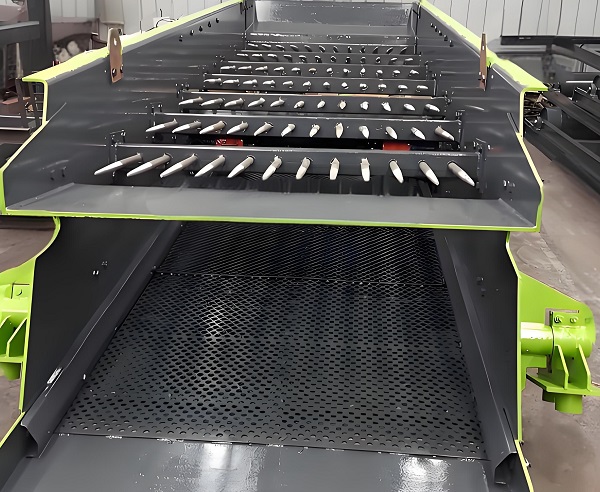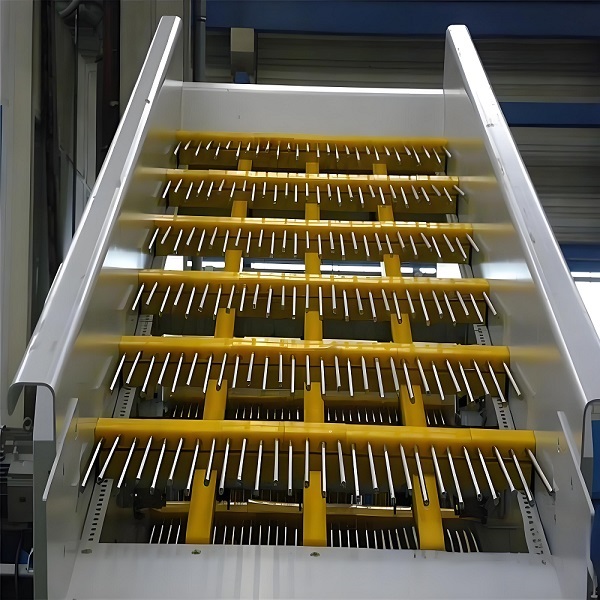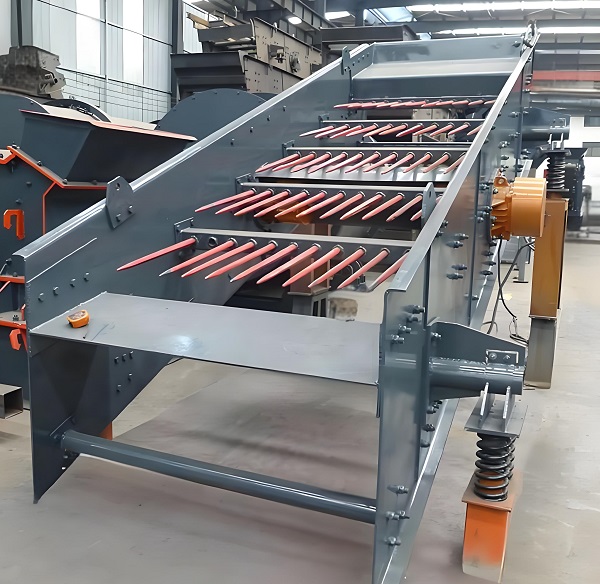Foreword: As an efficient screening equipment, the finger screen is widely used in environmental protection, coal mining, chemical industry, metallurgy, electric power, building materials and other industries. It has significant advantages in grading lumpy and small and medium-sized particle materials. The installation and maintenance of the finger screen play a key role in its efficient and stable operation and extending its service life. Correct installation can ensure that the finger screen achieves the best screening effect when working. By accurately adjusting the position and angle of the finger screen and ensuring the tight fit of the screen and rods, screening efficiency can be maximized and material classification accuracy improved. The installation and maintenance steps of the finger screen will be introduced in detail below:
A. Installation of finger screen

Finger Screen
a. Overall installation and inspection:
1. The finger screen should generally be installed as a whole to ensure the stability of the equipment and screening efficiency.
2. Before installation, carefully check whether the screen mesh and rods are intact to avoid damaged parts affecting the screening effect.
3. Ensure that the finger screen is installed on a solid and flat foundation to prevent equipment displacement or damage due to vibration.
b. Connection between the vibration motor and the body: If the on-site situation requires the vibration motor to be disassembled from the body for installation, then after reassembly, the connecting bolts between the vibration motor and the body must be tightened to ensure the normal operation of the equipment.
c. Spring and body level adjustment:
1. After installation, ensure that the symmetrical bearing force of the front and rear springs is basically even, and ensure that the machine body is in a horizontal and vertical state to prevent the material from shifting to one side during operation and affecting the normal operation of the equipment.
2. There should be no less than 50 mm of swimming space between the machine body and surrounding equipment, so that the finger screen is completely free.
d. Electrical connection and debugging:
1. Connect the control box or frequency converter to the finger screen according to the electrical schematic diagram.
2. After the installation is completed, electrical debugging should be carried out to ensure the normal operation of the motor and control system.
e. Installation of rods and screens:
1. The screen needs to be firmly and flatly fixed on the frame in a horizontal manner and in an accurate position.
3. The rods are installed on the screen through fasteners such as clamp sleeves. The distance between the rods needs to be even, and the close contact between the rods and the screen must also be ensured.
4. After installation, each rod needs to be adjusted to ensure that it is perpendicular to the screen surface. The adjusted heights of the rods with different gradients need to be consistent to ensure the screening effect.

Finger Screen
B. Maintenance of finger screen
Maintenance is an important guarantee for the long-term stable operation of the finger screen. Maintenance measures such as regularly cleaning the screen surface, checking the condition of the bars and screens, lubricating moving parts, and adjusting gaps can effectively prevent equipment failures, reduce downtime, and improve production efficiency. At the same time, maintenance can also extend the service life of the finger screen, reduce maintenance costs, and create greater economic benefits for the enterprise.
a. Clean the screen surface: Regularly remove accumulated materials and impurities on the finger screen to prevent clogging and corrosion. After shutdown, the residue on the screen surface should be thoroughly cleaned to prevent the hardened material from being difficult to clean and affecting the next use.
b. Check the condition of the rods: Regularly check whether the rods are worn, bent or broken, and replace the damaged parts in time.
c. Lubricate moving parts: Lubricate bearings and other moving parts to reduce friction and wear. The lubrication system is an important part for the good operation of the finger screen, and the lubrication effect should be checked frequently.

Finger Screen
d. Adjust the gap: Adjust the gap between the rods according to the usage to ensure the screening accuracy.
e. Electrical system inspection: Check the motor and control system regularly to prevent electrical failures. The vibration motor is a key component that provides power. Its temperature, sound and movement status should be checked regularly. If any abnormality is found, it should be stopped in time for inspection and treatment.
f. Record maintenance history: Record the content and time of each maintenance in detail to facilitate tracking of equipment status and predicting future maintenance needs.
g. Safe operating practices: Operators must wear appropriate protective equipment to avoid injuries caused by contact with rotating parts during operation. Follow the instructions in the operating manual. Untrained personnel are not allowed to operate the equipment at will.
PS: By following the above installation and maintenance steps, you can effectively extend the service life of the finger screen and ensure that it always maintains good performance. Users should pay sufficient attention to the installation and maintenance of the finger screen to ensure the long-term stable operation of the equipment.
Save Time! Get A Detailed Quotation Quickly.
